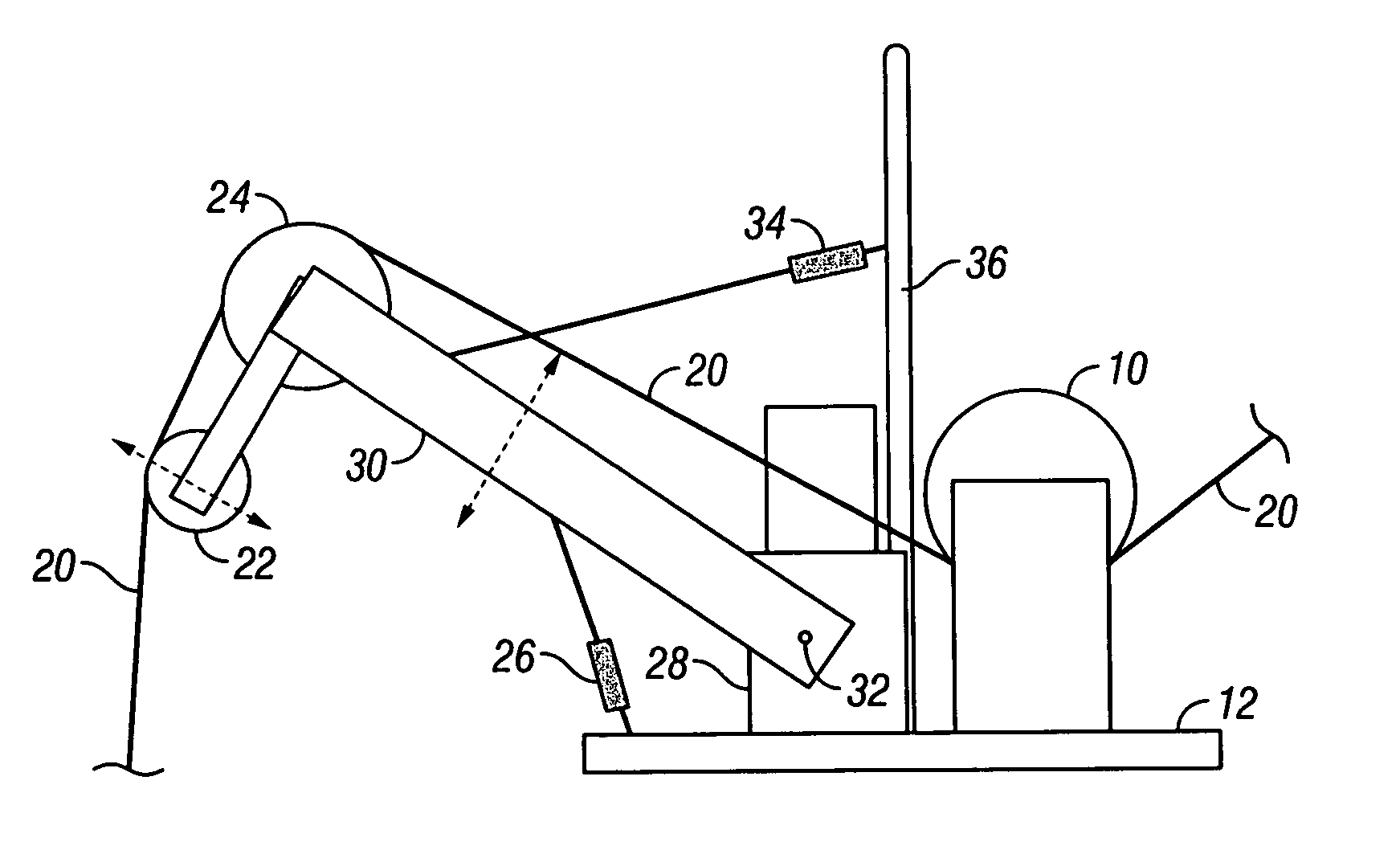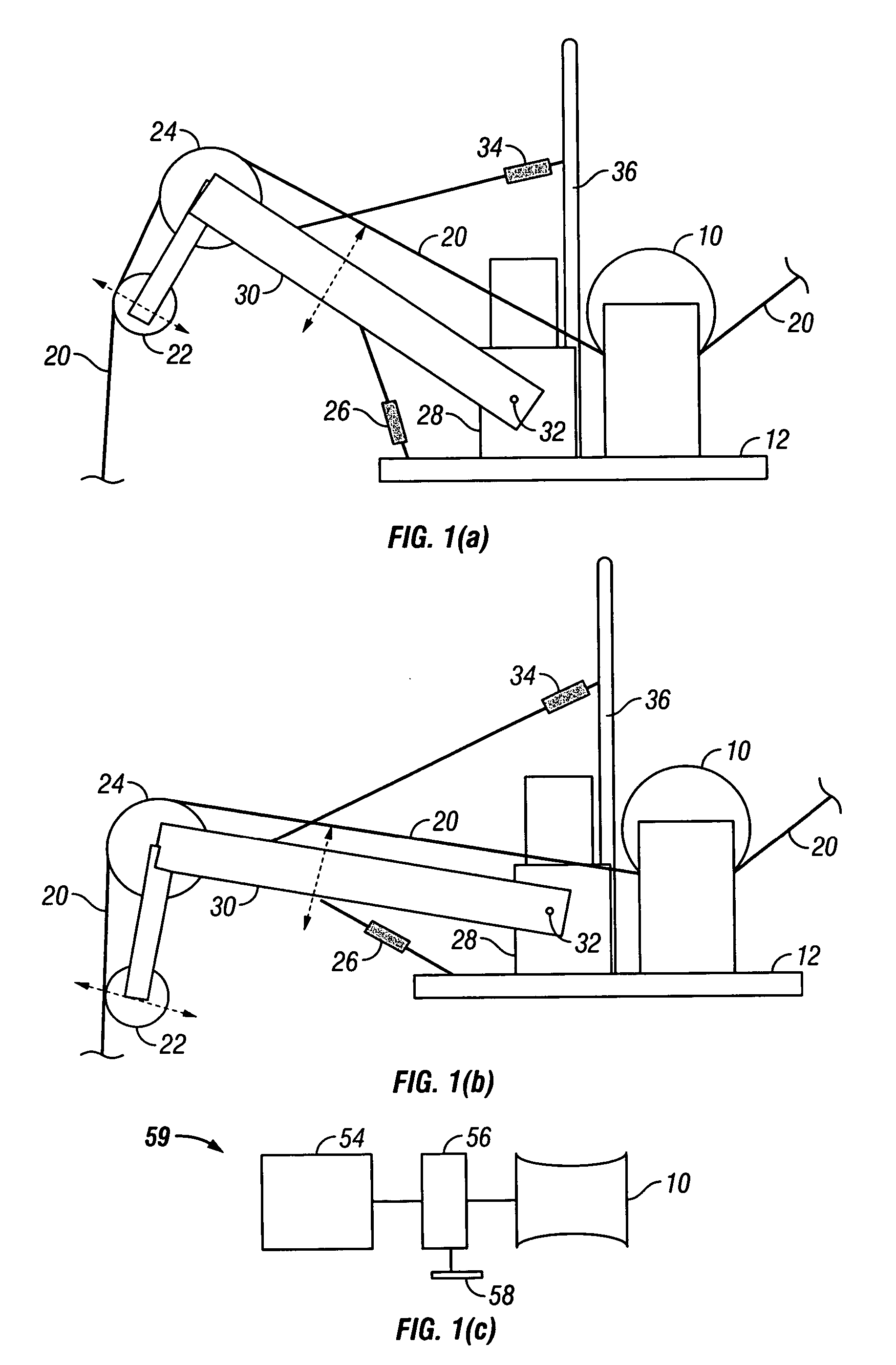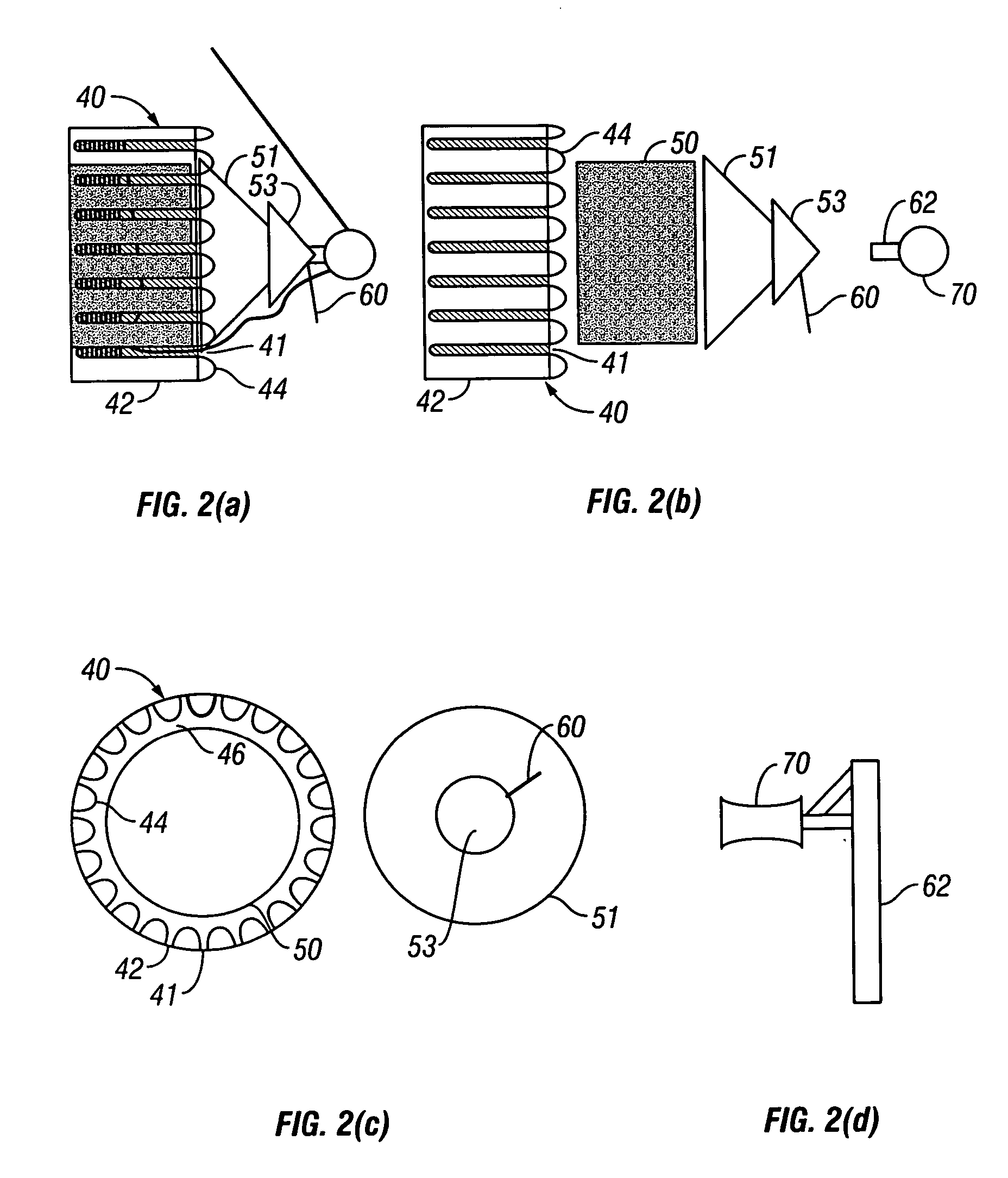Cable handling system
a handling system and cable technology, applied in the direction of hoisting equipment, load-engaging elements, waterborne vessels, etc., can solve the problems of equipment sinking into muddy and sandy sea beds, affecting the operation of equipment, and affecting the safety of equipment, so as to dampen the stress on the cable and reduce the force on the cable
- Summary
- Abstract
- Description
- Claims
- Application Information
AI Technical Summary
Benefits of technology
Problems solved by technology
Method used
Image
Examples
Embodiment Construction
[0020] According to the invention, a pulling device is provided that allows cable to be retrieved from water and sea beds without damage or fouling from the pulling process to either the cable components or attachments to the cable, even though such attachments may be wider than the cable itself. Cable components may include, for example, internal stress members, protective jackets, electrical and fiber optic conductors and insulating layers. Attachments to the cable may include, for example, sensor packages and other electrical or fiber optic equipment.
[0021] The pulling device distributes pulling forces and stresses among preferably all of the cable components, most preferably substantially equally among all of the cable components, including internal stress members of the cable and external jacketing material.
[0022] In a preferred embodiment, referring to FIGS. 1(a) and 1(b), the pulling device comprises a pulling drum 10, rotatably mounted on a preferably firm, stationary or r...
PUM
 Login to View More
Login to View More Abstract
Description
Claims
Application Information
 Login to View More
Login to View More - R&D
- Intellectual Property
- Life Sciences
- Materials
- Tech Scout
- Unparalleled Data Quality
- Higher Quality Content
- 60% Fewer Hallucinations
Browse by: Latest US Patents, China's latest patents, Technical Efficacy Thesaurus, Application Domain, Technology Topic, Popular Technical Reports.
© 2025 PatSnap. All rights reserved.Legal|Privacy policy|Modern Slavery Act Transparency Statement|Sitemap|About US| Contact US: help@patsnap.com



